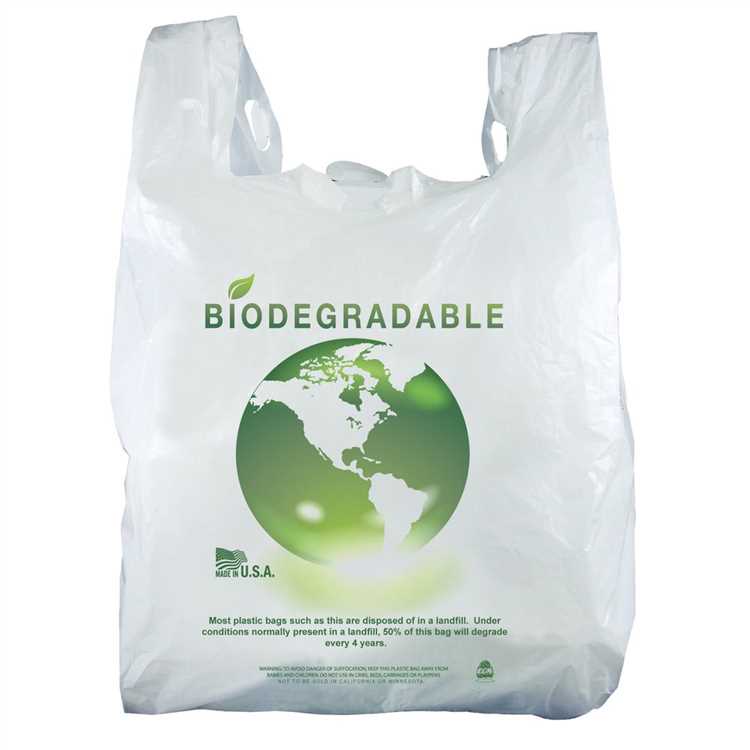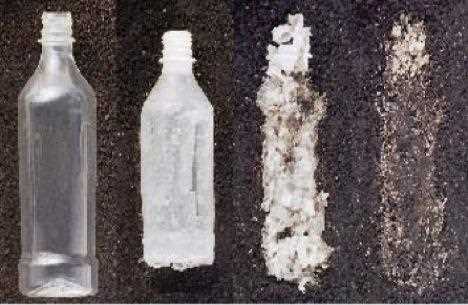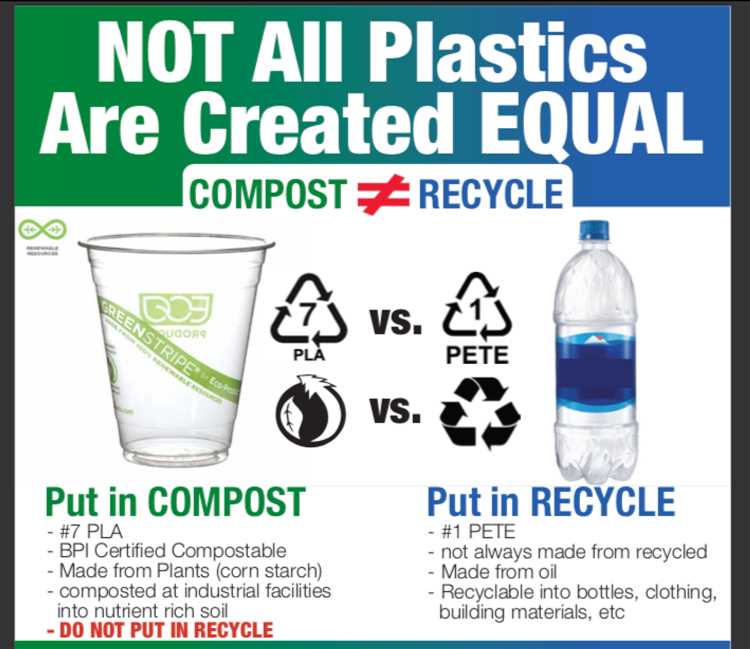
Biodegradable plastic is an innovative solution that offers numerous benefits for the environment and human health. Unlike traditional plastic, biodegradable plastic is designed to break down into natural elements, such as water, carbon dioxide, and biomass, through the action of microorganisms. This process helps reduce the amount of plastic waste in landfills and oceans, making it an eco-friendly alternative.
One of the major advantages of biodegradable plastic is its potential to reduce the carbon footprint. Traditional plastic is derived from fossil fuels, which contributes to greenhouse gas emissions and climate change. In contrast, biodegradable plastic is often made from renewable sources, such as plant starch or vegetable oils, which have a lower carbon footprint. By using biodegradable plastic, we can minimize our environmental impact and contribute to a more sustainable future.
Biodegradable plastic also offers significant benefits in terms of reducing pollution and protecting wildlife. Traditional plastic can take hundreds of years to decompose, resulting in litter that pollutes rivers, forests, and other natural habitats. This can pose a threat to animals that mistake plastic for food or become entangled in it. Biodegradable plastic, on the other hand, breaks down relatively quickly, reducing the risk of harm to wildlife and ecosystems.
However, there are also challenges associated with biodegradable plastic. One of the main challenges is ensuring proper disposal and recycling. Biodegradable plastic requires specific conditions, such as exposure to sunlight and moisture, to break down effectively. If not disposed of correctly, it can still end up in landfills where these conditions are not met, leading to a slower decomposition process. Additionally, mixing biodegradable plastic with traditional plastic in recycling facilities can contaminate the recycling process, making it more difficult to recycle both types of plastic.
In conclusion, biodegradable plastic presents a promising solution to the environmental issues caused by traditional plastic. Its ability to break down naturally and reduce pollution makes it an attractive option for businesses and consumers alike. However, proper disposal and recycling systems must be in place to fully harness the benefits of biodegradable plastic and overcome the associated challenges. With continued research and innovation, biodegradable plastic has the potential to revolutionize the way we use and dispose of plastic, creating a cleaner and healthier planet for future generations.
- Environmental Impact
- Sustainable Alternative
- Reduction of Waste
- Benefits of reducing waste with biodegradable plastics include:
- Challenges of reducing waste with biodegradable plastics include:
- Biodegradation Process
- Microbial Colonization
- Degradation of Polymer Chains
- Metabolism and Utilization
- Complete Biodegradation
- Technological Advancements
- Innovative Materials
- Improved Manufacturing Processes
- Economic Viability
- Reduced Waste Management Costs
- Market Demand and Consumer Appeal
- Research and Development Opportunities
- Q&A:
- What is biodegradable plastic?
- What are the benefits of using biodegradable plastic?
- Are there any challenges associated with biodegradable plastics?
- Do biodegradable plastics break down faster than traditional plastics?
- What are some alternatives to biodegradable plastic?
- What is biodegradable plastic?
- What are the benefits of using biodegradable plastic?
Environmental Impact
Biodegradable plastics have gained popularity due to their potential to reduce environmental impact. Traditional plastics, such as petroleum-based plastics, can take hundreds of years to decompose in the environment. This leads to the accumulation of plastic waste in landfills, oceans, and other ecosystems.
In contrast, biodegradable plastics are designed to break down naturally within a shorter period of time, usually within a few months to a few years. This means that they do not persist in the environment and contribute to long-lasting pollution. Biodegradable plastics can be broken down by microorganisms and bacteria, which convert them into natural substances such as water, carbon dioxide, and biomass.
By using biodegradable plastics, we can reduce the amount of plastic waste that ends up in landfills and ecosystems. This can help to prevent pollution, protect wildlife, and preserve natural habitats. Additionally, biodegradable plastics can also reduce the consumption of fossil fuels, as they are often made from renewable resources such as corn, sugarcane, or vegetable oils.
However, it is important to note that the environmental impact of biodegradable plastics can vary depending on various factors. For example, the conditions in which the plastics are disposed of can affect their rate of decomposition. If biodegradable plastics are not properly disposed of in a composting facility or other suitable environment, they may not break down as quickly or effectively.
Furthermore, the production of biodegradable plastics can also have its own environmental impacts. The cultivation of crops used to make biodegradable plastics, such as corn or sugarcane, may require large amounts of water, fertilizer, and pesticides. Additionally, the manufacturing process for biodegradable plastics may also require energy-intensive processes.
Overall, while biodegradable plastics have the potential to reduce environmental impact compared to traditional plastics, it is important to consider the full life cycle and disposal methods of these materials to ensure their environmental benefits are maximized.
Sustainable Alternative
Biodegradable plastic offers a sustainable alternative to traditional plastics, which are derived from non-renewable resources such as petroleum. By using biodegradable plastics, we can reduce our dependence on fossil fuels and mitigate the environmental impact of plastic waste.
One of the key benefits of biodegradable plastics is that they can be broken down by the natural process of biodegradation. This means that when they are discarded and exposed to the elements, such as sunlight and moisture, they will decompose into natural elements, such as carbon dioxide, water, and biomass, in a relatively short period of time.
Additionally, biodegradable plastics have the potential to be produced from renewable resources, such as plant-based materials like corn starch or sugarcane. These renewable resources can be grown in abundance and replenished, unlike petroleum, making them a more sustainable option for plastic production.
Furthermore, biodegradable plastics have the potential to reduce the amount of plastic pollution in our oceans and landfills. Traditional plastics can take hundreds of years to break down, resulting in long-lasting environmental impacts. By using biodegradable plastics, we can help reduce the accumulation of plastic waste and protect our ecosystems.
However, there are still challenges to overcome in the widespread adoption of biodegradable plastics. One challenge is the cost of production, as biodegradable plastics can currently be more expensive to produce than traditional plastics. Additionally, there is a need to develop effective collection and composting systems to ensure that biodegradable plastics are properly disposed of and do not end up in our environment.
In conclusion, biodegradable plastics offer a sustainable alternative to traditional plastics, with the potential to reduce our dependence on fossil fuels and mitigate the environmental impact of plastic waste. While there are challenges that need to be addressed, the benefits of biodegradable plastics make them an important solution in our quest for a more sustainable future.
Reduction of Waste
One of the main benefits of biodegradable plastic is its ability to reduce waste. Traditional plastic materials can take hundreds of years to decompose, leading to an accumulation of waste in landfills and the environment. On the other hand, biodegradable plastics are designed to break down naturally over time, resulting in a reduction of waste.
By using biodegradable plastics, we can decrease the amount of plastic waste that ends up in landfills and oceans. This can have a significant impact on the environment, as plastic pollution is a major global issue. Biodegradable plastics offer a solution to this problem by providing an alternative material that can be broken down in a shorter period.
Benefits of reducing waste with biodegradable plastics include:
- Less accumulation of non-degradable plastic waste
- Reduced pollution in landfills and oceans
- Less reliance on fossil fuels for the production of traditional plastic
In addition to reducing waste, biodegradable plastics also have the potential to be recycled or composted, further minimizing their impact on the environment. This can help create a more sustainable waste management system, where materials are reused or returned to the earth.
Challenges of reducing waste with biodegradable plastics include:

- Increased cost of production compared to traditional plastics
- Limited availability and accessibility of biodegradable plastic products
- Educating consumers about the importance of proper disposal and recycling of biodegradable plastics
Despite these challenges, the reduction of waste through the use of biodegradable plastics is an important step towards a more sustainable future. It offers a way to address the growing problem of plastic pollution and reduce our dependence on non-renewable resources.
Biodegradation Process
Biodegradation is the process through which biodegradable plastics are broken down by natural organisms and environmental factors. This process is important because it helps reduce the accumulation of plastic waste in landfills and natural environments.
The biodegradation process of biodegradable plastics typically involves the following steps:
-
Microbial Colonization
When biodegradable plastics are exposed to the environment, microorganisms such as bacteria and fungi colonize the surface of the plastic. These microorganisms secrete enzymes that break down the plastic into smaller molecules.
This initial colonization is crucial for the subsequent degradation of the plastic.
-
Degradation of Polymer Chains
The enzymes secreted by the microorganisms begin the process of cleaving the polymer chains in the plastic. This process is known as hydrolysis. The polymer chains are broken down into smaller fragments, such as oligomers and monomers.
The degradation of the polymer chains continues as more microorganisms colonize the plastic and secrete additional enzymes.
-
Metabolism and Utilization
Once the plastic has been broken down into smaller fragments, microorganisms use these fragments as a source of carbon and energy. The fragments are metabolized and utilized by the microorganisms as nutrients.
During this process, the plastic is further broken down into simpler compounds, such as carbon dioxide and water.
-
Complete Biodegradation
The final stage of the biodegradation process involves the complete conversion of the plastic into non-toxic and environmentally friendly substances.
Depending on the environmental conditions and the type of plastic, the complete biodegradation process can range from weeks to several years.
While biodegradable plastics offer the potential to reduce plastic pollution, it is important to note that the biodegradation process may not occur in all environments. Factors such as temperature, moisture, oxygen availability, and the presence of specific microorganisms can significantly influence the rate and extent of biodegradation.
Technological Advancements
As biodegradable plastics continue to gain popularity, there has been significant progress in the development of new technologies that aim to enhance their production, performance, and disposal. These technological advancements play a vital role in overcoming some of the challenges associated with biodegradable plastics while maximizing their benefits.
Innovative Materials
One of the key areas of technological advancements in biodegradable plastics involves the development of innovative materials. Researchers are continuously exploring new ingredients and combinations that can improve the strength, flexibility, and biodegradability of these plastics. For example, bio-based polymers derived from renewable sources such as corn, sugarcane, or algae are being used to create more sustainable biodegradable plastics.
Moreover, scientists are experimenting with different types of additives and fillers to enhance the mechanical properties and biodegradation rate of biodegradable plastics. These advancements in material development contribute to the overall performance of biodegradable plastics, making them a more viable and effective alternative to traditional plastics.
Improved Manufacturing Processes

In addition to innovative materials, technological advancements have also paved the way for improved manufacturing processes for biodegradable plastics. Manufacturers are adopting more efficient and cost-effective methods to produce these plastics at large scales while reducing resource consumption and environmental impact.
Advanced techniques such as injection molding, extrusion, and blow molding are being utilized to create different shapes and forms of biodegradable plastics, making them suitable for a wide range of applications. These improved manufacturing processes ensure the consistency and quality of biodegradable plastics, making them more appealing to industries and consumers looking for sustainable alternatives.
Furthermore, advancements in recycling technology have made it possible to recycle certain types of biodegradable plastics, further reducing their environmental footprint. This not only helps in extending their lifecycle but also promotes a circular economy where plastics can be reused and transformed into new products.
Conclusion
The continuous technological advancements in the field of biodegradable plastics are transforming the way we approach plastic waste and sustainability. These advancements are enabling the production of stronger, more versatile, and truly biodegradable plastics that have the potential to reduce pollution and conserve resources. However, further research and development are still needed to address the challenges associated with cost, scalability, and widespread adoption. As technology continues to progress, biodegradable plastics are expected to play an increasingly significant role in the transition towards a more sustainable future.
Economic Viability
Biodegradable plastics can have several economic benefits that contribute to their viability as an alternative to traditional plastics.
Reduced Waste Management Costs
One of the primary economic benefits of biodegradable plastics is the potential for reduced waste management costs. As these plastics break down more easily in the environment, there is less need for costly recycling or waste disposal methods. This can lead to significant savings for businesses and municipalities.
Market Demand and Consumer Appeal
Another economic advantage of biodegradable plastics is the growing market demand for sustainable products. As consumers become more environmentally conscious, there is increasing demand for products that have less impact on the planet. Biodegradable plastics can attract eco-conscious consumers and tap into this expanding market, giving businesses a competitive edge.
In addition, some governments and regulatory bodies are implementing policies and incentives to promote the use of biodegradable plastics. This can provide businesses with opportunities for financial support or tax incentives, further enhancing the economic viability of these products.
Research and Development Opportunities
The development and production of biodegradable plastics also present economic opportunities in the research and development (R&D) sector. Companies that invest in R&D for new biodegradable materials can gain a competitive advantage by introducing innovative products to the market.
Furthermore, advancements in manufacturing processes and technologies for biodegradable plastics can lead to cost reductions and improved efficiency. This can make biodegradable plastics a more economically viable option in the long run.
Overall, the economic viability of biodegradable plastics is supported by the potential for reduced waste management costs, market demand for sustainable products, government support, and R&D opportunities. These factors contribute to the appeal and potential profitability of biodegradable plastics as a sustainable alternative to traditional plastics.
Q&A:
What is biodegradable plastic?
Biodegradable plastic is a type of plastic that breaks down over time into natural substances through the action of microorganisms such as bacteria or fungi. This means that it can be decomposed by nature and does not persist in the environment for hundreds of years like traditional plastic.
What are the benefits of using biodegradable plastic?
The benefits of using biodegradable plastic include reducing the amount of plastic waste in the environment, decreasing the reliance on fossil fuels, and lowering greenhouse gas emissions. Biodegradable plastics also have the potential to be reused or recycled, further reducing their environmental impact.
Are there any challenges associated with biodegradable plastics?
Yes, there are challenges associated with biodegradable plastics. Some of these challenges include the higher cost of production compared to traditional plastics, the limited availability of recycling infrastructure for biodegradable plastics, and the potential for biodegradable plastics to release harmful chemicals during decomposition.
Do biodegradable plastics break down faster than traditional plastics?
Yes, biodegradable plastics typically break down faster than traditional plastics. However, the rate of decomposition can vary depending on factors such as the specific type of biodegradable plastic used, environmental conditions, and the presence of microorganisms that aid in the decomposition process.
What are some alternatives to biodegradable plastic?
Some alternatives to biodegradable plastic include compostable plastics, which are designed to break down in commercial composting facilities, and reusable products made from materials such as glass, metal, or cloth. Additionally, reducing plastic consumption altogether and opting for packaging-free or refillable options can also help reduce plastic waste.
What is biodegradable plastic?
Biodegradable plastic is a type of plastic that can be broken down by bacteria and other living organisms, eventually returning to nature. Unlike traditional plastic, which can take hundreds of years to decompose, biodegradable plastic breaks down much faster, reducing its impact on the environment.
What are the benefits of using biodegradable plastic?
Using biodegradable plastic has several benefits. Firstly, it reduces the amount of plastic waste that ends up in landfills and oceans, helping to protect wildlife and ecosystems. Secondly, biodegradable plastic can help mitigate climate change as it produces fewer greenhouse gas emissions during its production and decomposition. Lastly, biodegradable plastic can reduce our dependence on fossil fuels, as it can be made from renewable resources such as cornstarch or vegetable oils.